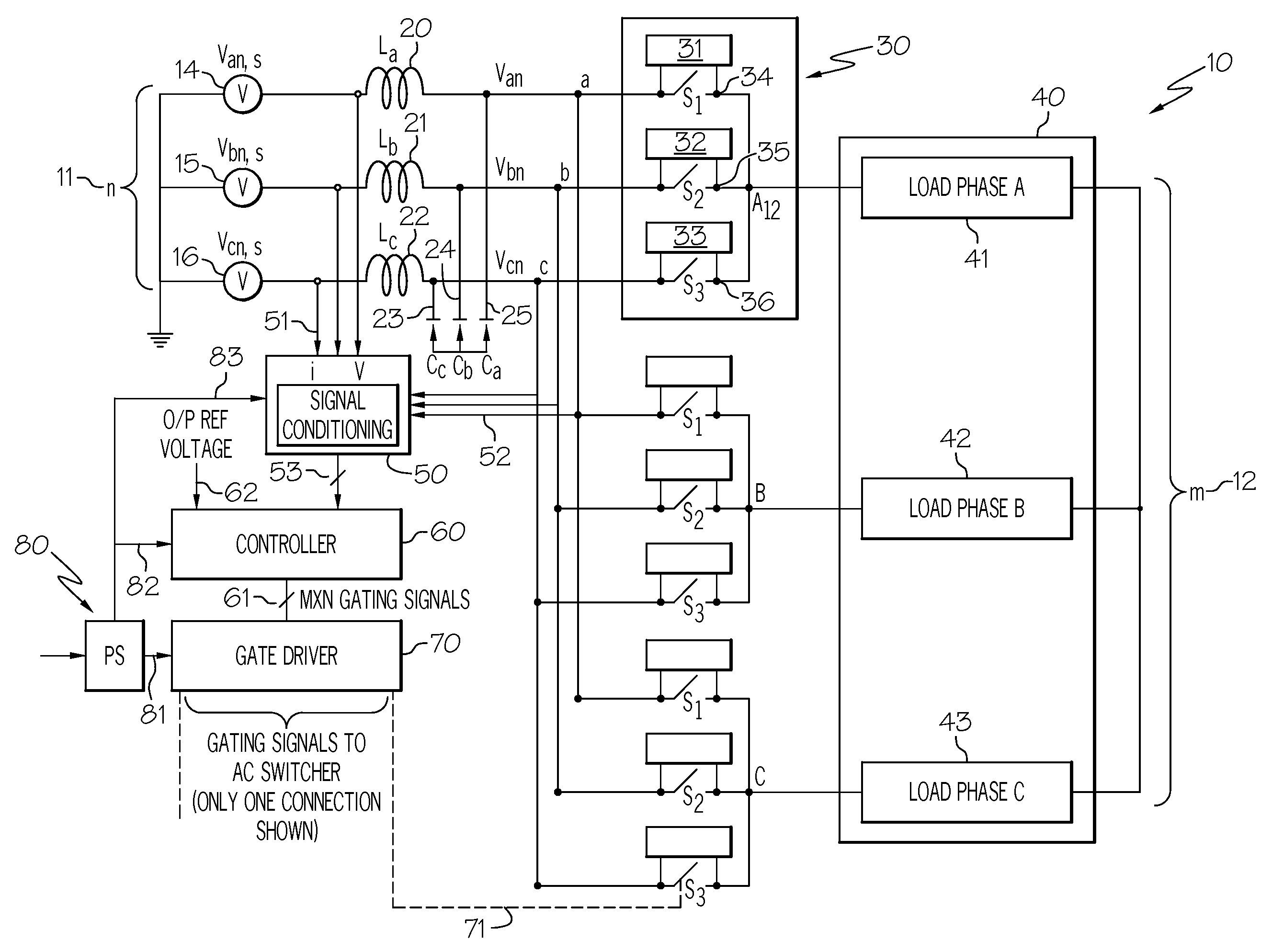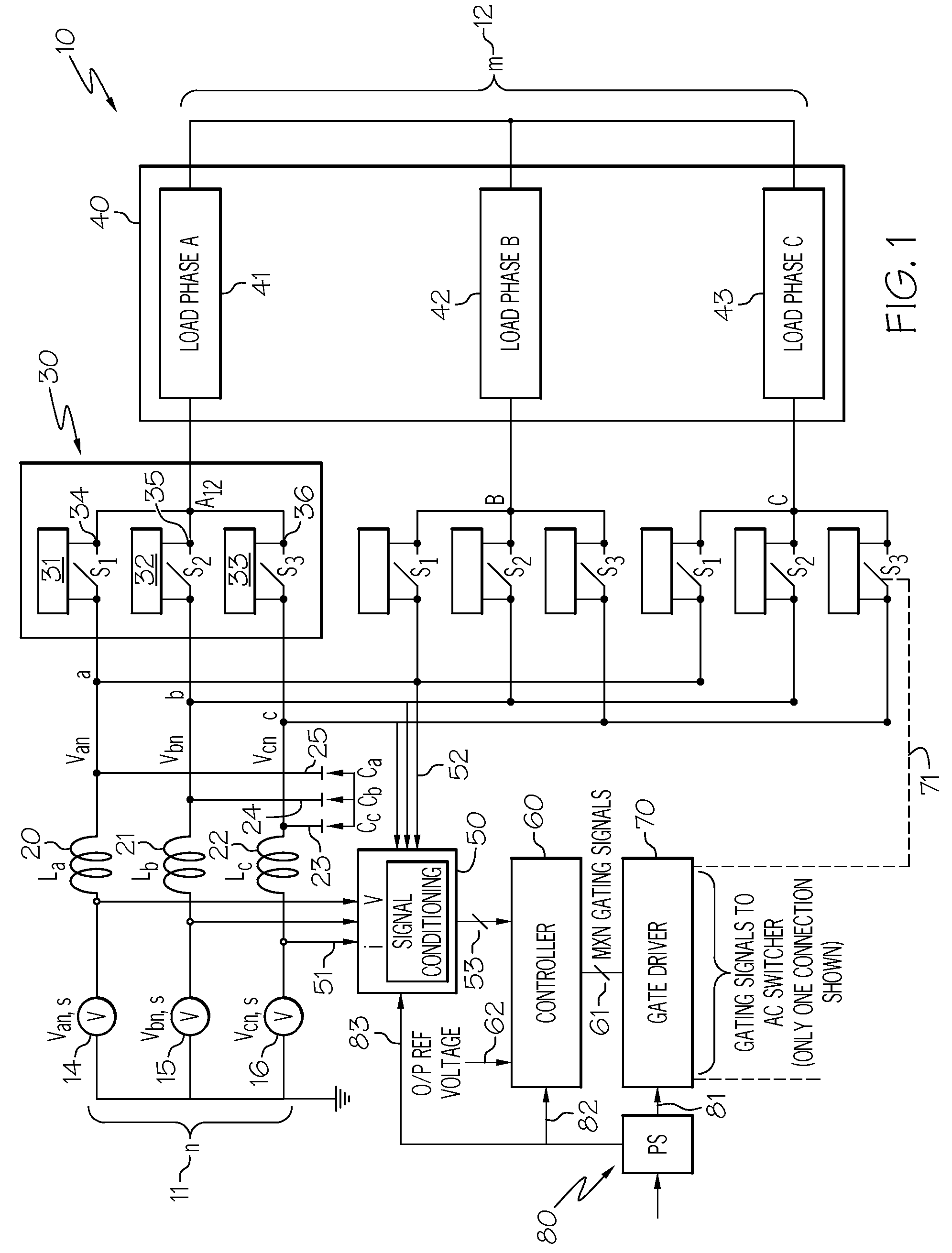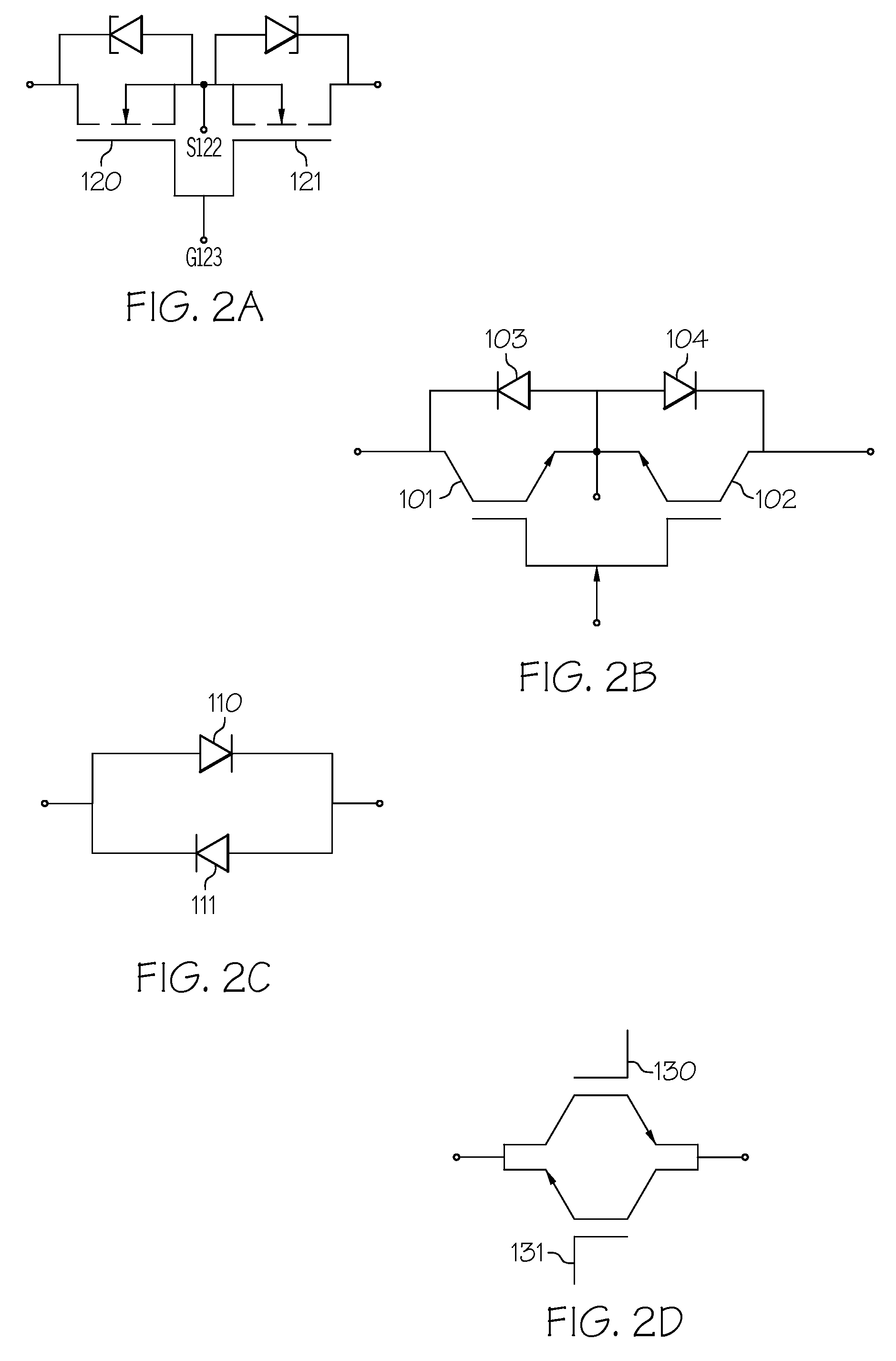Advanced matrix converter and method for operation
a matrix converter and converter technology, applied in the direction of power conversion systems, circuit arrangements, ac-ac conversion, etc., can solve the problems of heavy idg subsystems, inconvenient operation, and inability to directly supply power to frequency sensitive loads, so as to minimize the requirements of isolated gate driver circuits
- Summary
- Abstract
- Description
- Claims
- Application Information
AI Technical Summary
Benefits of technology
Problems solved by technology
Method used
Image
Examples
Embodiment Construction
[0027]The following detailed description is of the best currently contemplated modes of carrying out the invention. The accompanying figures are simplified, not drawn to scale and are meant to include various direct AC-AC conversion applications with different electric power system input / output requirements. In the figures, each identical or substantially similar component that is illustrated in various figures may be represented by a single item or notation. Generalized control algorithms and block-diagrams are developed to reduce the number of figures required to show full operation. For purposes of clarity, not every component is labeled in every figure, nor is every component of each embodiment of the invention shown where illustration is not necessary to allow those of ordinary skill in the art to understand the invention. The description and accompanying figures are not to be taken in a limiting sense, but are made merely for the purpose of illustrating the general principles ...
PUM
 Login to View More
Login to View More Abstract
Description
Claims
Application Information
 Login to View More
Login to View More - R&D
- Intellectual Property
- Life Sciences
- Materials
- Tech Scout
- Unparalleled Data Quality
- Higher Quality Content
- 60% Fewer Hallucinations
Browse by: Latest US Patents, China's latest patents, Technical Efficacy Thesaurus, Application Domain, Technology Topic, Popular Technical Reports.
© 2025 PatSnap. All rights reserved.Legal|Privacy policy|Modern Slavery Act Transparency Statement|Sitemap|About US| Contact US: help@patsnap.com



